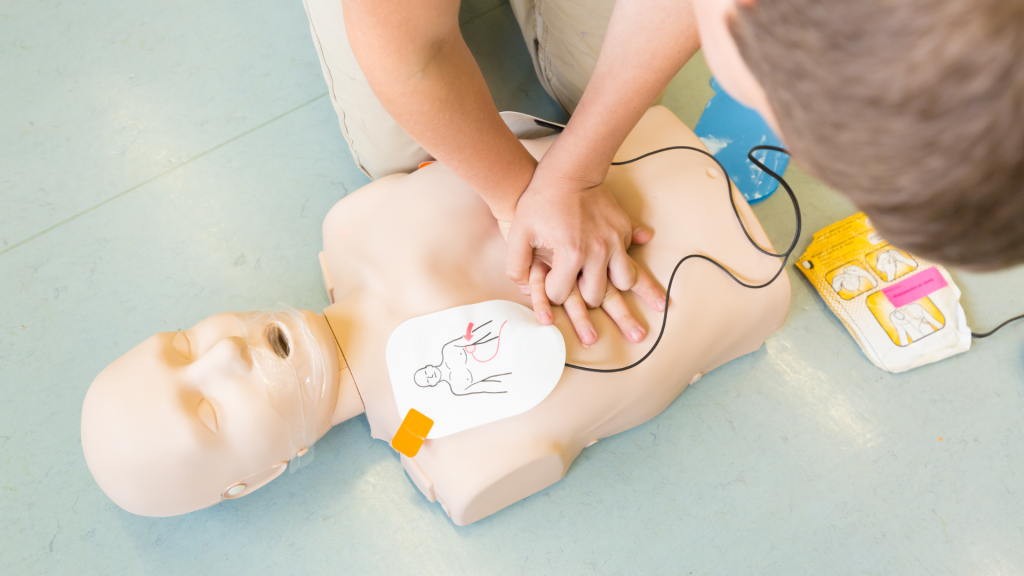
Every parent entrusts the school system with the well-being of their child during school hours. This includes a safe environment that protects them from physical harm and provides a quick response to medical emergencies. Sudden cardiac arrest (SCA) is a serious medical condition that can strike anyone, including young, healthy individuals. In a school setting, having Automated External Defibrillators (AEDs) readily available significantly increases the chances of survival for someone experiencing SCA. This article explores the safety benefits of AEDs in schools, delving into how these devices can make a lifesaving difference.
Sudden cardiac arrest (SCA) is a condition where the heart abruptly stops pumping blood effectively. This disrupts blood flow to vital organs, including the brain, and can lead to death within minutes without immediate intervention. SCA can occur due to various reasons, even in seemingly healthy children. Underlying heart conditions, electrolyte imbalances, and strenuous physical activity can all be contributing factors.
While SCA is less common in young people compared to adults, it’s still a critical concern in schools. According to the American Heart Association, around 7,000 sudden cardiac deaths occur annually among youth in the United States. These deaths are often preventable with prompt CPR and defibrillation.
During SCA, the heart’s electrical impulses become chaotic, causing it to quiver instead of pumping blood efficiently. This is called ventricular fibrillation (VF). An AED is a portable medical device designed to analyze the heart rhythm and deliver an electrical shock, if necessary, to restore a normal heart rhythm.
Early defibrillation is essential in SCA cases. With each passing minute without a heartbeat, the brain and other vital organs suffer increasing damage. Studies show that the chance of survival from SCA decreases by 7-10% with every minute that defibrillation is delayed.
In a school setting, where emergency medical services (EMS) may take several minutes to arrive, having an AED readily available can bridge this critical gap. By providing a defibrillation shock within the first few minutes of SCA, an AED can significantly increase the victim’s chances of survival and improve their chances of a full recovery.
Equipping schools with AEDs offers a multitude of safety benefits for students, staff, and visitors. Here’s a closer look at the most impactful advantages:
While AEDs are a vital tool in responding to SCA, they are most effective when used in conjunction with CPR. CPR helps maintain minimal blood circulation until an AED can be retrieved and used. Therefore, ensuring that school staff and some students receive CPR training is crucial for maximizing the effectiveness of AEDs in saving lives.
Schools should consider implementing CPR training programs for staff and CPR certification opportunities for interested students. This comprehensive approach equips the school community with the knowledge and skills necessary to respond effectively during a cardiac emergency.
Despite the numerous safety benefits, some challenges may arise when considering AED programs in schools. Here’s a look at some common concerns and potential solutions:
Implementing AED programs in schools goes beyond simply acquiring the devices. It’s about creating a culture of preparedness where everyone understands the importance of SCA response and feels empowered to take action. Here are some additional considerations:
By addressing these challenges and taking a comprehensive approach, schools can create effective AED programs that significantly enhance student and staff safety.
In conclusion, equipping schools with AEDs is a wise investment in the safety and well-being of our children. These devices offer a critical tool for increasing survival rates from SCA and minimizing long-term health risks. By overcoming challenges, implementing effective training programs, and fostering a culture of preparedness, schools can create a safe environment where everyone feels empowered to respond effectively in the event of a medical emergency. The benefits of AED programs in schools far outweigh the initial investment, potentially saving countless lives and ensuring a brighter future for our children.